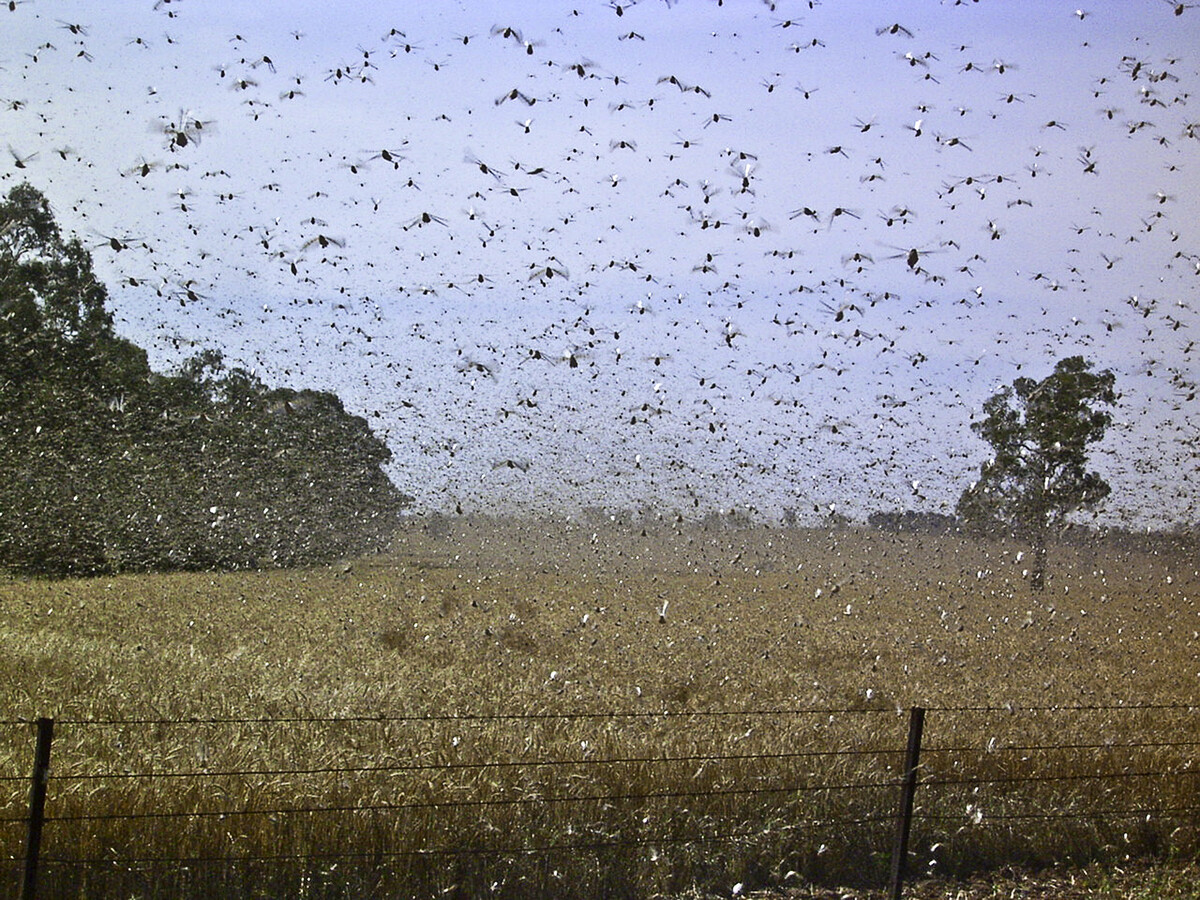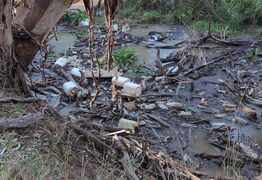Localised locust outbreaks hit Warren, Gilgandra, Coonamble, Tottenham areas
Lily Plass
20 February 2025, 2:12 AM
 Locust Swarm. Photo: NSW Department of Primary Industries and Regional Development
Locust Swarm. Photo: NSW Department of Primary Industries and Regional Development Locusts are hitting several properties pretty hard from southeast of Warren up to the Warrumbungles and now is the perfect time to make headway with spraying, according to Senior Bio Security Officer at the Local Land Service (LLS) Rhett Robinson.
Since mid-January surveys and grower reports have revealed frequent medium-density nymphs with occasional high-densities in the Warren-Mount Foster-Quambone-Coonamble-Baradine-Gilgandra-Collie area, with medium-density swarms detected later in the area west of Tottenham.
These swarms are classified as localised outbreaks..
It all began around mid-December when a swarm of locusts flew in and laid their eggs in these areas.
"Those nymphs have hatched and they're the ones we're seeing on the wing at the moment," Mr Robinson said.
Where those swarms came from is unknown, according to Mr Robinson.
Growing crops are no match for a swarm of locusts so getting to them ahead of sowing is a high priority.
"They can really make short work of a cereal crop coming out of the ground," he said.
"We have a window of opportunity between now and when crops start growing where landholders can do as much as they can to control them."
According to a joint state and federal government bulletin released on 14 February it is likely that some locust bands will develop from untreated populations or aggregated populations after migration/dispersal from late February onwards.
There is a low likelihood of widespread infestations developing during February and March.
Locust swarms banding in Coonamble. Video: supplied
So far, around 30 properties in the Coonamble Shire have reported locusts, although sightings have been recorded as far as Warren, Armatree, and Collie.
"There's been a mix of low-density and high-density swarms on the western side of the Warrumbungles and west of the Pilliga as well," Mr Robinson said.
A high-density swarm consists of around 50 locusts per square meter.
One of the landholders who have reported locusts to the LLS is Margaret Garnsey and her husband Larry.
"He probably put out around 60 litres of chemical," Mrs Garnsey said.
"They haven't made too much damage but you can see patches where they have had an impact."
Since the spraying, the locusts have been under control.
The localised outbreak is not comparable to a massive outbreak in western NSW in 2003 between Dubbo and Collie which required aerial spraying to get the locusts under control.
"It's not uncommon to have this sort of locust activity in the area. Over the last 20 years, I can think of four or five times an outbreak like this has happened."
It is vital for landholders to report locust swarms so that the LLS can map them properly and provide landholders with the right equipment to spray them.
"We can scale things up and give as much support as needed. If no one reports anything, we think everything's fine," Mr Robinson said.
"Landholders need to be the first line of defence in controlling locusts."
Localised breeding is expected to continue with above average rainfall and temperatures forecast for the rest of February and March.
The best time to spray adult locusts is in the morning when they are still roosting.
"Go while it's still cool before it gets too warm and they start to fly. You can spray them when they are adults but it needs to be a medium- to high-density swarm to make it worthwhile."
The minimum density to start spraying is 10 locusts per square meter.
Even better is to get to the locusts when they haven't hatched yet.
"Control the next generation when they're still on the ground," Mr Robinson said.



